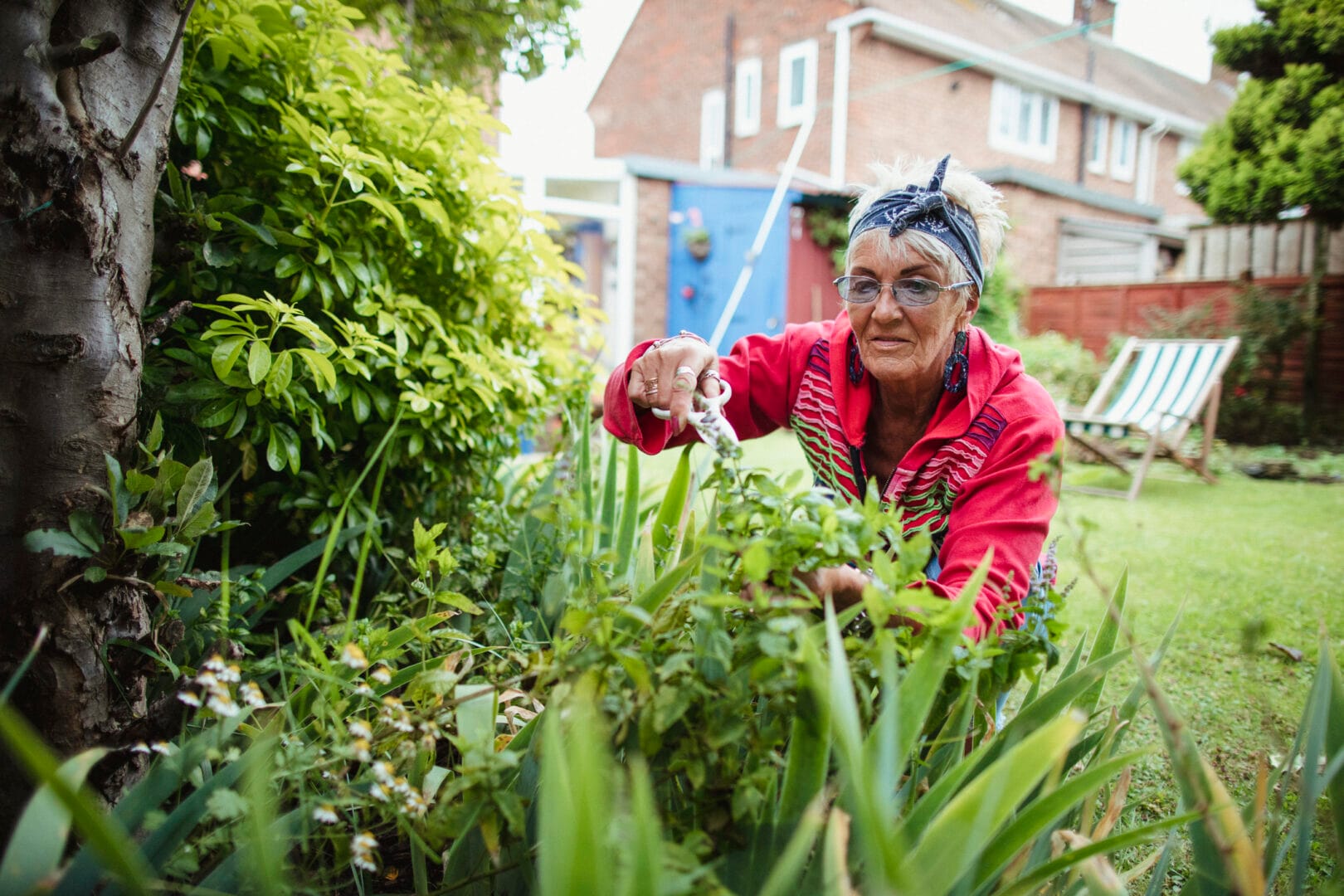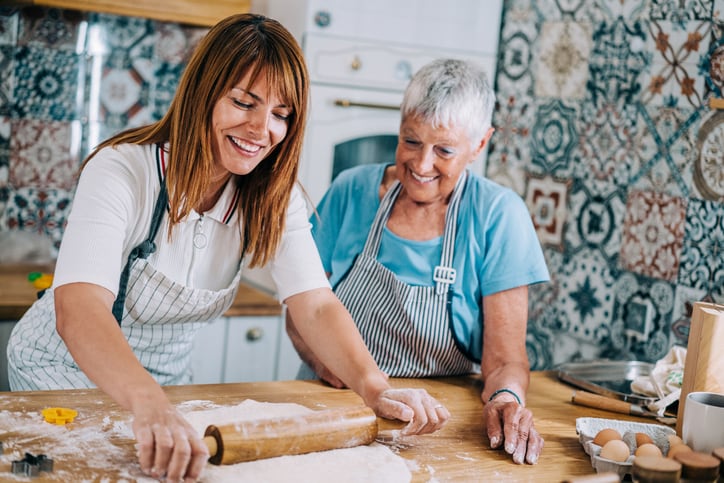It’s no secret that exercise comes with a host of benefits for anyone and everyone — but these benefits are especially important for older adults, according to Laura Flynn Endres, an LA-based certified personal trainer who works primarily with seniors.
Endres notes that exercise is key in combating muscle loss (or sarcopenia), as most individuals lose an average of 3 to 5% of muscle mass with each decade; something that, according to Harvard Health, can result in a 30% overall loss in muscle mass for men throughout their lifetimes.
When seniors retain muscle, it can keep them mobile and stave off dangerous falls. Also, exercise is a boon for mental health. A study observing previously sedentary seniors who walked for roughly an hour daily found that their hippocampus grew, the part of the brain responsible for memory.
Here, tips for older adults who want to get their fitness fix outside — and the best ways to do it, based on specific needs.
How seniors can stay safe and comfortable while active outdoors
While hot summer temperatures in many parts of the country might make outdoor movement seem more difficult, there are ways to stay safe and comfortable, according to Endres.
Here are her tips for older adults:
Notify others.
“This is important for anyone of any age who plans to exercise solo,” she says. “That way, should you become lightheaded and turn an ankle and can’t continue on, your family or friend knows where to find you.”
Dress for success.
“Make sure you’re dressed for the weather, including wearing layers,” she recommends. “Put on good shoes. Take your phone, a bottle of water and sunscreen. A small hiking-style backpack is ideal for carrying these things and allowing you to be hands-free.”
Hydrate adequately.
Endres recommends at least 10 ounces of water prior to heading outside, then consuming an additional 10 ounces during the activity (between 30 and 60 minutes) and another 10 ounces back home. “Water is critical to every function in the body, including maintaining proper body temperature and having enough energy to sustain exercise.”
“Walking outside where you encounter hills, uneven pavement, curbs and grass is a great outdoor exercise activity.”
Laura Flynn Endres, certified personal trainer
Outdoor activities for seniors
Here are outdoor options that will keep older adults active.
For mobile seniors: walking
Turns out, one of the most health-enhancing exercises a senior can do is something they (might) do everyday: walking. According to Harvard Health, walking can improve a person’s immune system, enhance joint function and even combat sugar and fat cravings, while other studies have noted a regular walking routine results in reduced blood pressure, blood pressure and cardiovascular disease risk.
But as Endres points out, walking outdoors — particularly on varied, uneven surfaces — can bring forth cognitive benefits, too. “Walking outside where you encounter hills, uneven pavement, curbs and grass is a great outdoor exercise activity,” she explains, noting that varied terrain improves your coordination and agility, too.
That being said, if the person you’re caring for might not do so well on uneven surfaces or has trouble with vision or coordination, it’s OK to stick to flat, even pavement, or easing into more difficult terrain (like beginning alternating between grass and pavement).
If possible, aim for a 15- to 30-minute walk per day with 2 to 3 of those sessions over the course of a week on uneven or varied surfaces.
For older adults looking to improve balance and coordination: tai chi
For seniors, falls are a serious matter — the Centers for Disease Control and Prevention (CDC) notes that over 3 million seniors land in the emergency room after taking a tumble. One of the best ways to prevent major falls from happening is to incorporate an exercise routine that combines balance, cardiovascular and strength work.
Enter: tai chi.
“Tai chi is a gentle movement practice that will promote stability, balance and flexibility,” explains Endres. “Because it involves slow, deliberate movements, you’ll also practice muscle control, which builds muscle endurance, and its meditation-like movements bring mental health benefits too like relaxation and focus.”
A meta-analysis review of 10 tai chi-focused studies in the Journal of the American Geriatrics Society found that the exercise could reduce a senior’s risk of falling by upwards of 50%. The ancient practice was more successful than several other exercises — from resistance training and yoga to even physical therapy — at combating dangerous falls.
Aim for 10 minutes of tai chi three to five times per week. Browse websites like Facebook and MeetUp.com to look for local outdoor tai chi classes, or try a YouTube video.
For seniors struggling with depression and anxiety: Gardening
If an older adult has a garden, or lives in a senior community with one, planting a few gorgeous flowers or juicy tomatoes might be one of the best things for their overall health. A meta-analysis of studies surrounding gardening found that the (practical) practice can reduce depression, anxiety and mood fluctuations, as well as improve a person’s physical fitness, cognitive function and weight control.
That being said, gardening involves bending, kneeling and crouching — all of which can feel challenging for older adults. The key, says Endres, is to take it slow. “Think of gardening like a workout program,” she suggests. “You wouldn’t expect to go to the gym on the first day and do unlimited exercising. With gardening, start small and divide activities into small segments over several days.”
Aim for three 15- to 30-minute gardening sessions per week.
“Think of gardening like a workout program. Start small and divide activities into small segments over several days.”
Laura Flynn Endres, certified personal trainer
For seniors with arthritis or chronic pain: Water aerobics
When it comes to forms of exercise that are safe for seniors with arthritis, it doesn’t get much better than swimming and water aerobics. The CDC notes that water-based exercise won’t inflame or worsen arthritis symptoms. If anything, the CDC says, submerged movement often improves symptoms.
It’s an outdoor workout Tina Baxter, a gerontological nurse practitioner, often recommends to her clients. “You might also check out the neighborhood pool,” she suggests. “They may offer senior-friendly swim times.”
If there are no neighborhood pools nearby, consider tapping into SilverSneakers, a benefit through Medicare that allows many 65+ folks access to gyms, pools and aquatic workout classes.
Aim for one to three 30-minute water aerobics sessions per week.
For seniors who use wheelchairs or walkers: Targeted strength training
For older adults with the ability to use their upper limbs, scooping up a low-cost resistance band with handles and heading to a nearby park provides the perfect outdoor workout, says Endres.
You can anchor resistance bands at various levels on playground equipment or park benches to do pushing and pulling exercises, she explains.
Check out this YouTube resistance band workout targeted toward people in wheelchairs. The workout consists of moves that strengthen the back, biceps, triceps and core. It’s important to note that science has shown that strength training for all older adults, even those who are wheelchair-bound, combats sarcopenia, various chronic diseases and even premature death.
For seniors who use a walker, there are plenty of lower- and upper-body strength exercises to try, too. Try this walker-focused workout from YouTube to start.
Aim for two to three 30-minute strength sessions per week.
Ultimately, no matter the ability level, any older adult can kick off an outdoor fitness program and enjoy long-term positive results.

